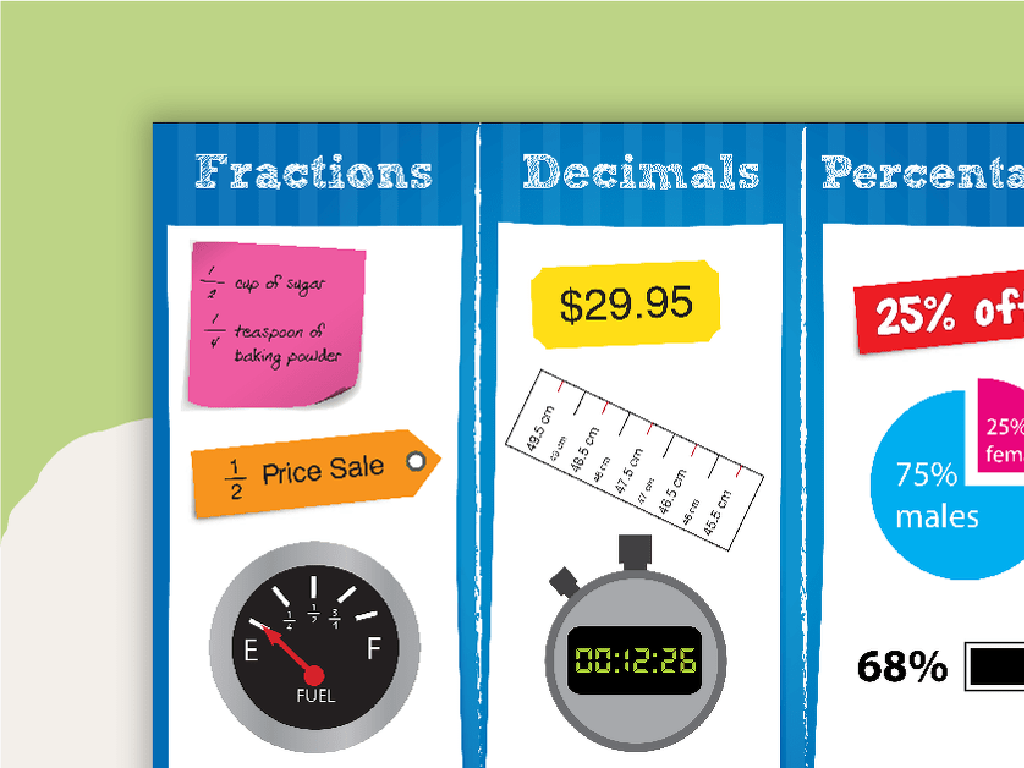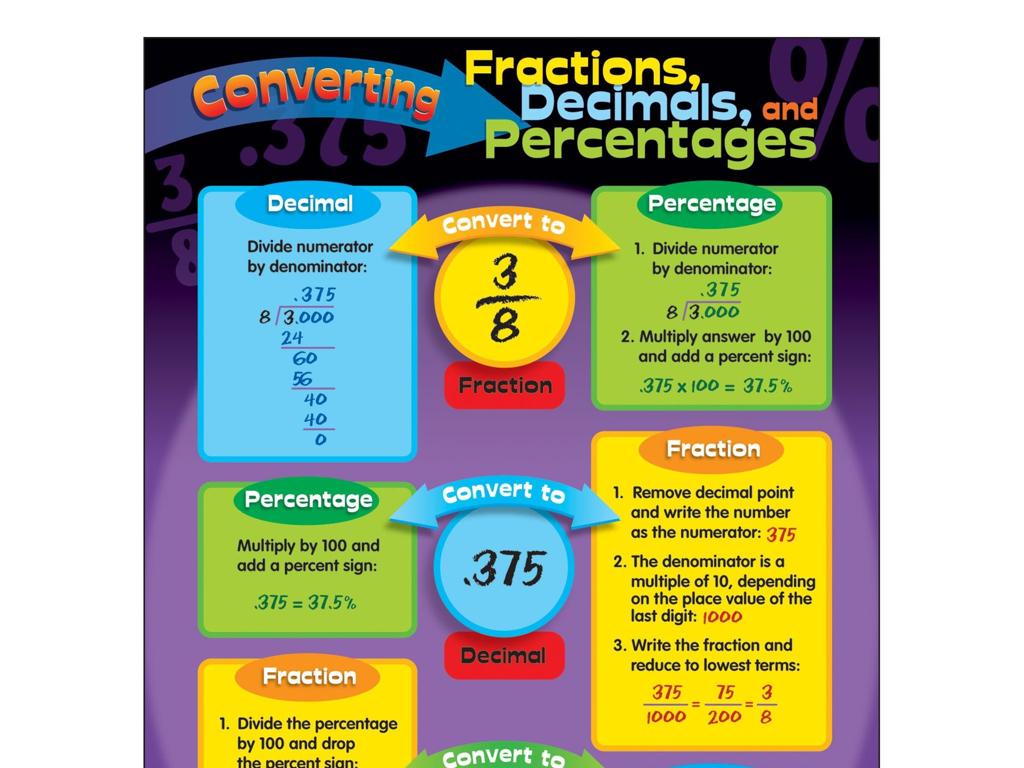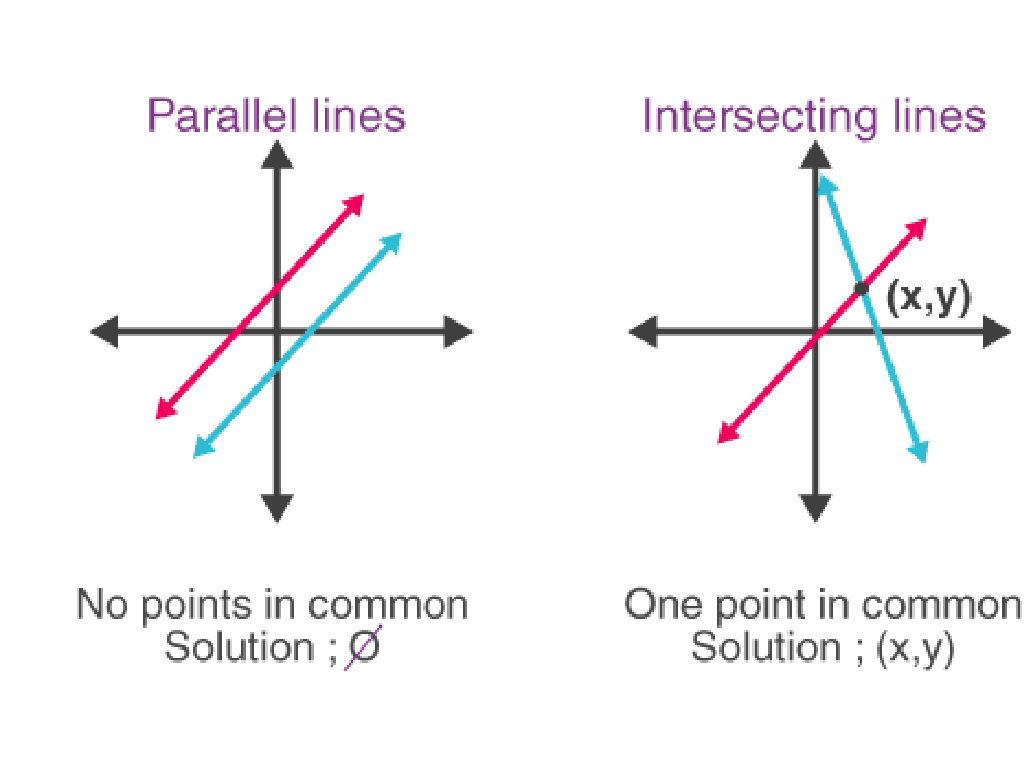Hands-On Chemistry Activities
Subject: Science
Grade: High school
Topic: Chemistry
Please LOG IN to download the presentation. Access is available to registered users only.
View More Content
Welcome to Hands-on Chemistry!
– Dive into chemistry’s excitement
– Today’s hands-on activity lineup
– Explore reactions, compounds, and more
– Emphasize safety and proper attire
– Wear lab coats, goggles, and gloves
– Correct handling of chemicals
– Learn to manage spills, fumes, and disposal
|
This slide introduces students to the fascinating world of chemistry and sets the stage for a day filled with interactive learning. Begin by sparking their interest in the subject with a brief discussion on the impact of chemistry in everyday life. Outline the activities planned for the session, which may include experiments demonstrating chemical reactions, compound formation, and other key concepts. Stress the importance of safety in the lab, including the necessity of wearing appropriate protective gear such as lab coats, safety goggles, and gloves. Teach students the proper techniques for handling chemicals, including how to deal with potential spills or fumes and the correct disposal methods. The goal is to ensure a safe and educational experience that encourages students to engage with the subject matter actively.
Understanding Chemical Reactions
– Define a chemical reaction
– A process where substances change into new substances with different properties.
– Everyday life chemical examples
– Baking bread, rusting iron, and digesting food.
– Reactants vs. products
– Reactants are substances that start a reaction, products are what you get after the reaction.
– Mass conservation principle
– In a reaction, the total mass of products equals the mass of reactants.
|
This slide introduces the concept of chemical reactions, which are fundamental to understanding chemistry. Begin by defining a chemical reaction as a process that transforms reactants into products with different properties. Provide relatable examples such as baking, rusting, and digestion to illustrate how chemical reactions are part of everyday life. Explain the roles of reactants and products in a reaction, and introduce the law of conservation of mass, which states that mass is neither created nor destroyed in a chemical reaction. Encourage students to think of other common reactions and consider the reactants and products involved. For the hands-on activity, consider experiments like vinegar and baking soda reactions or combining iron filings with sulfur to observe a reaction and mass conservation.
Types of Chemical Reactions
– Combination reactions overview
Two or more substances react to form a single new substance, e.g., A + B AB.
– Decomposition reactions explained
A single compound breaks into two or more simpler substances, e.g., AB A + B.
– Single-replacement reaction
An element in a compound is replaced by another element, e.g., A + BC AC + B.
– Double-replacement reaction
Elements from two different compounds swap places, e.g., AB + CD AD + CB.
|
This slide introduces students to the four basic types of chemical reactions. Combination reactions involve multiple reactants forming one product, which can be demonstrated by mixing iron filings with sulfur to form iron sulfide. Decomposition reactions involve a single reactant breaking down into multiple products, such as the breakdown of hydrogen peroxide into water and oxygen gas. Single-replacement reactions involve one element being replaced in a compound, which can be shown by placing a strip of zinc in a copper sulfate solution, resulting in zinc sulfate and copper metal. Double-replacement reactions involve the exchange of components between two compounds, such as mixing silver nitrate with sodium chloride to form silver chloride and sodium nitrate. Encourage students to perform these reactions in a controlled lab setting to observe the changes firsthand. Provide safety guidelines and ensure proper handling of all materials.
Activity 1: Creating a Volcano
– Gather all materials needed
– Combine vinegar and baking soda
– Add food coloring and dish soap for effect
– Observe the eruption
– Note the fizzing and foaming
– Discuss the chemical reaction
– Identify as an acid-base reaction
|
This hands-on activity is designed to demonstrate an acid-base reaction in a fun and engaging way. Students will simulate a volcanic eruption using common household items. The combination of vinegar (acid) and baking soda (base) creates a chemical reaction that produces carbon dioxide gas, causing the ‘eruption’. Adding food coloring makes the ‘lava’ more realistic, while dish soap adds more foam to the reaction. Encourage students to observe the reaction closely and discuss the science behind it. Possible variations of the activity could include changing the concentration of vinegar or using different substances to cause reactions.
Activity 2: Electrolysis of Water
– Gather materials for the experiment
– You’ll need water, salt, a battery, pencils, and wires
– Set up the electrolysis circuit
– Connect pencils to the battery with wires in water
– Conduct the experiment safely
– Electricity will split water into hydrogen and oxygen
– Observe and identify gases produced
– Bubbles at pencils are hydrogen and oxygen gases
|
This hands-on activity is designed to demonstrate the chemical process of electrolysis, where electrical energy is used to induce a chemical reaction. Students will set up a simple circuit using a battery, wires, and pencils as electrodes in a saltwater solution. As electricity is passed through the water, it breaks down into hydrogen and oxygen gases, which can be observed as bubbles at the pencil tips. Teachers should ensure students understand the safety procedures, especially when dealing with electricity and the production of gases. Possible variations of the activity could include changing the concentration of salt in the water, using different electrolytes, or using different materials for electrodes to see how these changes affect the rate of gas production.
Activity 3: Making Slime – Understanding Polymers
– Gather materials for slime
– You’ll need glue, borax, water, food coloring, and utensils
– Follow the mixing procedure
– Slowly mix glue with water, then add borax solution
– Observe polymerization process
– Watch as the mixture transforms into slime
– Discuss the chemistry behind slime
– How does mixing these ingredients create a polymer?
|
This activity is designed to give students a hands-on experience with the chemical process of polymerization. By mixing glue (which contains the polymer polyvinyl acetate) with a borax solution (acting as a cross-linking agent), students can observe the formation of a new substance with unique properties – slime. This transformation is a result of the chemical bonds that form between the polymer chains, turning a liquid into a viscoelastic solid. Encourage students to note changes in viscosity, texture, and form. This activity not only makes chemistry fun but also concretely illustrates the concept of polymerization. Possible variations include changing the amount of borax to alter the slime’s consistency or adding different colors.
Chemistry in the Real World
– Chemistry’s role in industries
– Explore how products are made, from food to tech gadgets.
– Chemical reactions in the environment
– Discuss photosynthesis and pollution control.
– Careers stemming from chemistry
– Learn about jobs in pharmaceuticals, forensics, and more.
– Encouraging real-world connections
|
This slide aims to bridge the gap between theoretical chemistry and its practical applications in the real world. Highlight how chemistry is integral in creating everyday products and the importance of chemical reactions in maintaining environmental balance. Discuss various career paths that chemistry knowledge can lead to, such as pharmaceuticals, forensic science, and environmental law. Encourage students to think about how the chemistry they learn in class can be applied to real-world problems and industries. Provide examples like the development of new materials, quality control in food production, and innovations in renewable energy. This will help students see the relevance of their studies and possibly inspire future career interests.
Group Experimentation: Hands-on Chemistry
– Divide into groups for the activity
– Choose an experiment to conduct
– Select from acid-base reactions, crystallization, or electrochemistry
– Record all observations carefully
– Note color changes, temperature, time, and measurements
– Present findings to the class
|
This slide sets the stage for a collaborative and interactive class activity focused on hands-on chemistry experiments. Students should be divided into small groups to foster teamwork. Provide a list of experiments that each group can choose from, such as acid-base reactions, crystallization processes, or simple electrochemistry setups. Ensure that each group has the necessary materials and safety equipment for their chosen experiment. Instruct students to observe and record everything during the experiment, including any changes in color, temperature, and time taken for reactions. After completing the experiments, each group will present their methodology, observations, and conclusions to the class. This activity will help students understand the practical application of chemistry concepts and enhance their analytical skills.
Wrapping Up: Chemistry in Action
– Recap of chemistry experiments
– Open floor for questions
Feel free to ask about any part of today’s activities.
– Emphasize safety and cleanup
Remember to always wear protective gear and dispose of chemicals properly.
– Reflect on today’s learning
Think about how these experiments apply to real-world chemistry.
|
As we conclude today’s session on hands-on chemistry activities, it’s crucial to review the experiments conducted, ensuring students have grasped the key concepts. Encourage an open discussion where students can ask questions to clarify their understanding. Reinforce the importance of safety measures during experiments and the proper cleanup procedures to maintain a safe learning environment. Lastly, prompt students to reflect on the application of the experiments to real-world scenarios, fostering a deeper appreciation for the subject of chemistry. Prepare to provide examples of safety protocols and potential real-world applications to facilitate the discussion.





